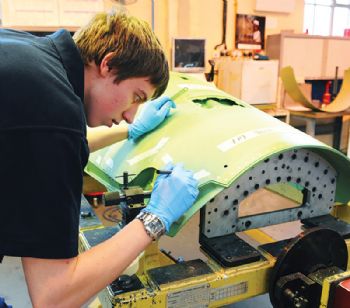
Following the publication of a report by the Royal Academy of Engineering, the Institution of Mechanical Engineers has said that the UK education system cannot produce enough engineers to support the economy.
Engineering Skills for the Future — the 2013 Perkins Review Revisited found “numerous barriers” to addressing the annual shortfall of 59,000 engineers and technicians; these included narrow post-16 education options, teacher shortages and an overly restrictive Apprenticeship Levy.
Royal Academy fellow John Perkins (
www.raeng.org.uk), who led the original review and the follow-up, said: “Engineering is enormously valuable to the UK economy, but it suffers from a chronic shortage of skills. It is let down by the education system, which removes the option of an engineering career for too many young people at each stage of their education.
“There has been little progress in addressing the UK’s engineering skills gap since I first reviewed the education system five years ago, at the Year of Engineering campaign in 2018 has shown what can be achieved with concerted and co-ordinated action.
"As a profession, we must now continue to raise the profile of engineering nationally and leverage this to galvanise change for the better.”
The report says that teacher numbers for STEM subjects have not kept pace with the increase in pupil numbers since 2015, adding that Government plans to address recruitment and retention challenges do not go far enough.
Other issues identified in the report include: the potentially “disastrous effect” of introducing varied fees for different degree subjects; bias in recruitment, progression and retention; and restrictions to the Apprenticeship Levy.
One of the recommendations in the new report is for the Government to review the recruitment and retention of teachers, and to introduce a requirement for 40hr of subject-specific continuing professional development for all teachers of STEM subjects every year.
Peter Finegold, the IMechE’s head of education (and a key contributor to the report) (
www.imeche.org), said: “Many STEM teachers do not know about engineering, and this is in turn restricts pupils’ exposure to the sector.
"The STEM Insight programme provides an excellent blueprint for this approach, which has delivered over 230 teacher placements in industry over the last four years.
"This gives teachers immersive access to engineering firms to understand the sector and the varied routes into engineering careers. Teachers bring this professionally life-changing experience back to school to inspire their
colleagues and students.”
A divide between academic and technical education is a key theme in the report — something contributors said must be overcome for future engineers to have the right mix of practical skills needed for increasingly digital work-places.
Recommendations to bridge the gap include an “urgent review of post-16 academic education pathways” to attract a broader range of young people into engineering, and the need for professional engineering organisations and employers to address the need for digital training.
Mr Finegold added: “A profound shift in attitudes is required to achieve greater parity.
“If employers are to help with this, they must be given greater flexibility in the use of the Apprenticeship Levy and more say in how their resources are spent in order to achieve this goal.”